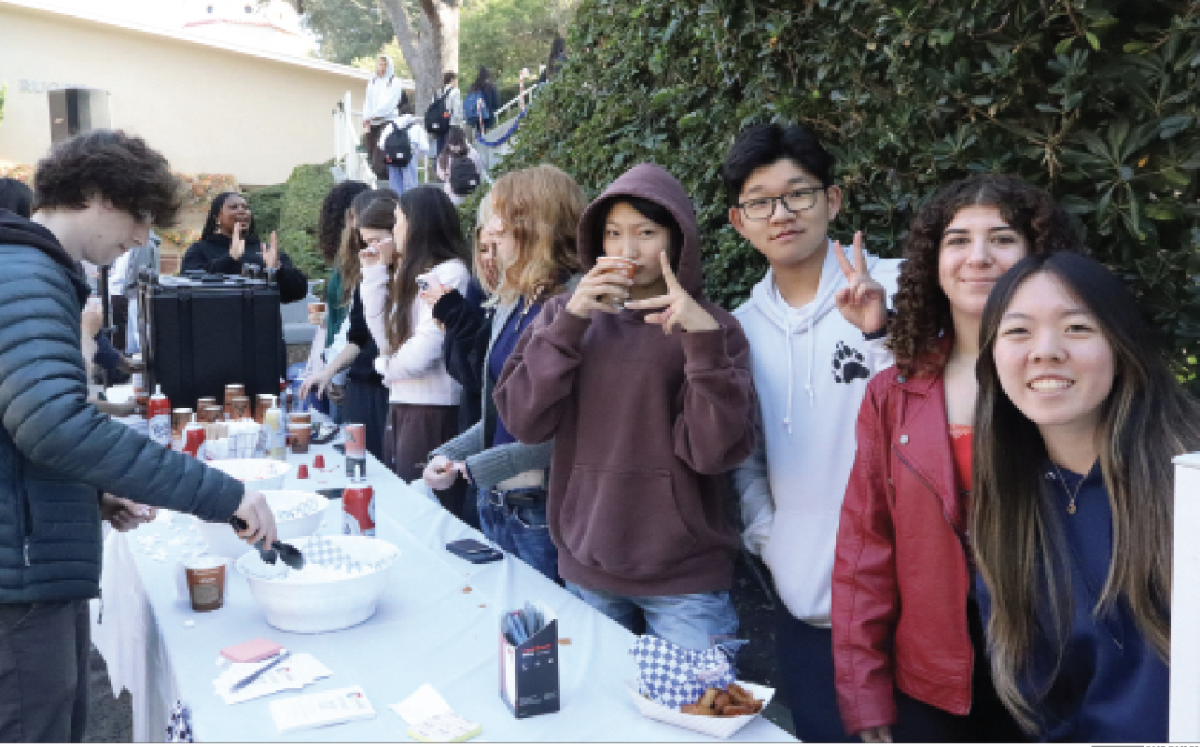Five-time Olympian Dara Torres ’85 encouraged students to “never put an age limit on your dreams” at the annual Women’s History Month Assembly March 18 where she spoke about her career which stretched from her junior year at Westlake to a final attempt to qualify for the 2012 London games as a mother at age 45.
Torres said her competitiveness helped her brush off speculation that age would hold her back in multiple comebacks to competitive swimming.
“If someone says something negative to me, I’m going to use that as fuel,” Torres said. “I’m just going to show them wrong and prove them wrong.”
“When you dive in the water, the water doesn’t know your age,” she added.
After winning her first Olympic medal, a gold, at 17 in the 1984 Olympic Games, Torres went on to win 11 more medals to tie as the most decorated female swimmer in the United States.
At only 25 years old in her third Olympic games, Torres said her teammates for the 1992 Barcelona Olympics called her “grandma,” mocking the fact that she was considered old for an Olympic swimmer.
Eight years later, after her last race in the 2000 Sydney Olympics, ready to retire, she ridiculed a reporter who asked her whether she would return again to the Olympics.
“I looked at this guy and I said ‘That’s the stupidest question I’ve ever heard,’ and I walked off,” she said. “Needless to say, I need to find that guy and apologize to him because I never really thought I’d be back swimming at 41.”
Torres made yet another comeback to swim in the 2008 Beijing Olympics, where she won three silver medals: two in relay races and one in the 50 meter freestyle – where she lost by one one hundredth of a second.
“Until the day I die, I ask myself what could I have done better to win that race,” she said.
Torres found that training with swimmers much younger than her helped in raising the competitiveness and coherence of the team, as younger swimmers pushed themselves not to be beaten by her.
Yet, she found that her maturity and experience was what helped her excel over her younger competitors. Torres emphasized how her age provided perspective, which allowed her to be in a calmer state of mind for competition.
“I realized at that moment when I walked in that I see things much different through the eyes of a 41-year-old than I did through the eyes of a teenager,” Torres said, reflecting on observing the other, younger girls in the ready room before one of her races. “For these kids, the race was the most important things in their life. My daughter was my most important thing. Maturity-wise, I was at such an advantage compared to these kids.”
Torres added that swimming helped her as a student at Westlake School for Girls, a place that she initially did not want to attend.
“I wasn’t the best student at Westlake when I first got here,” she said. “The more involved I got with sports, the better my grades got. I don’t think I’d be the woman I am today if I hadn’t gone to Westlake.”
While in middle school, Torres was coached by current athletic director of operations Darlene Bible who helped Gender Studies teacher Malina Mamigonian, who organized the assembly, get in touch with Torres.
Torres was introduced by GLI members Amanda Aizuss ’13, Julia Aizuss ’14, Mazelle Etessami ’14 and Sarika Pandrangi ’13, who spoke briefly about their recent trip to the 57th Commission on the Status of Women at the United Nations in New York, and by Gender Studies students Marielle Bagnard ’14 and Liza Wohlberg ’13.
Torres admitted she would not have been able to accomplish all that she had without Title IX, but she did not think men’s sports should be taken away or interfered with as a result. She hoped that women’s sports could be brought up to par with men’s without taking away from them.




























